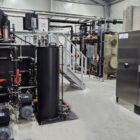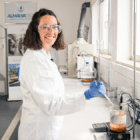The aeration tank is a central component of the activated sludge process, which is used in industrial and municipal wastewater treatment for the biological purification of wastewater. In this tank, the biological degradation of organic compounds is carried out by microorganisms (bacteria and other microbes), which are suspended in the wastewater as so-called activated sludge. Intensive aeration supplies oxygen, which is necessary to maintain the biological activity of the microorganisms. The microorganisms use the organic substances contained in the wastewater as nutrients, which purifies the wastewater.
Table of contents
Technical background
The aeration tank is an open tank or vessel that is supplied with oxygen by mechanical or pneumatic systems to support the biodegradation of organic contaminants. It operates in the aerobic range, which means that the oxygen content is high enough to promote the growth of aerobic bacteria.
Aeration systems: Various types of aeration systems are used in the aeration tank to ensure the oxygen supply and mixing of the wastewater. The most common systems include
- Submersible aerators: These devices are submerged in the water of the pool and generate small bubbles through rotating disks or turbines, which distribute the oxygen in the water.
- Fine-bubble pressure aeration: Air is forced through special diffusers in the floor of the pool via compressed air stations, which generate fine-bubble air and thus ensure an efficient oxygen supply.
- Surface aerators: These aerators drive water from the surface into the pool and mix it with the air.
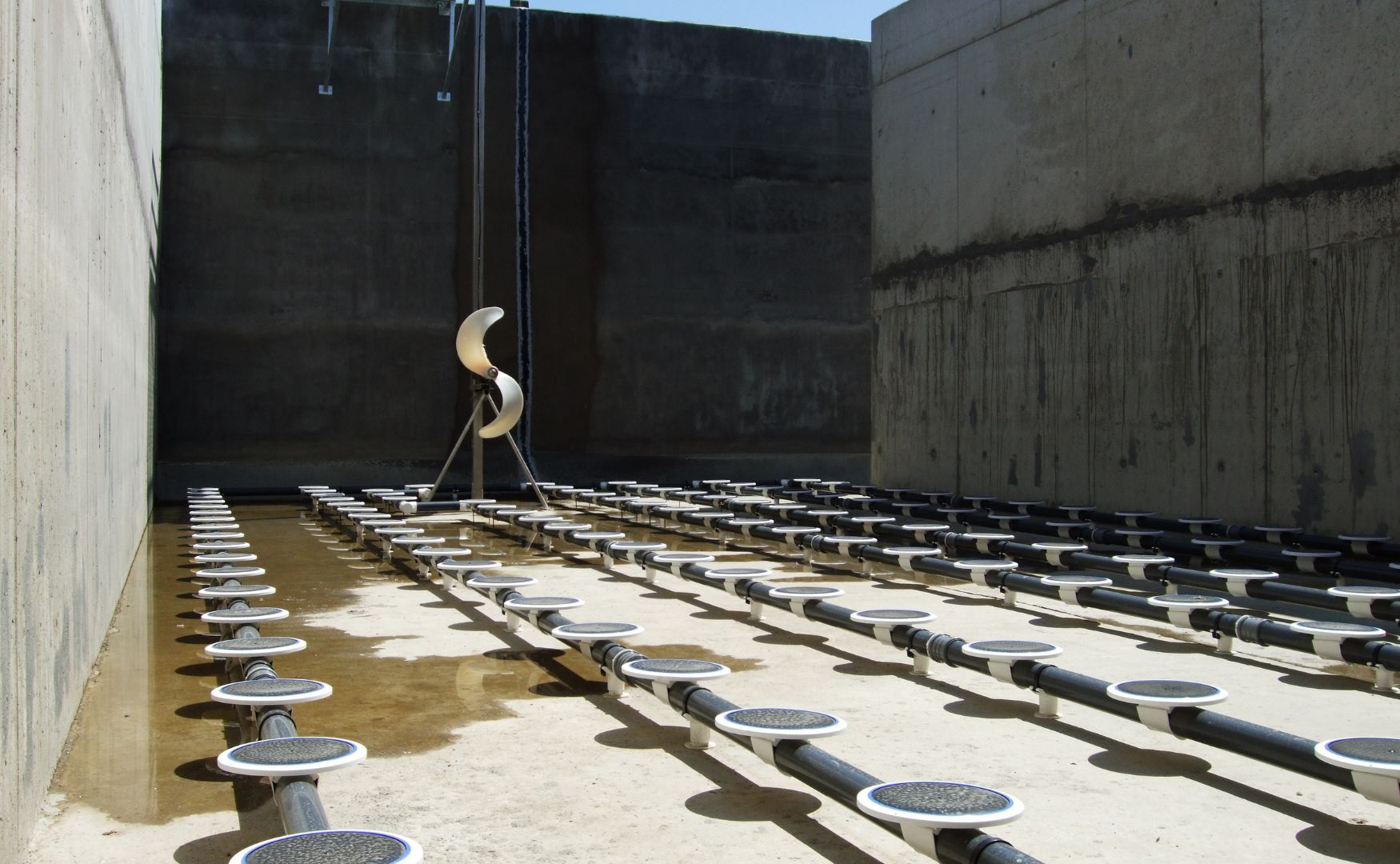
Photo: Aeration system in the activated sludge tank of the ALMA BHU BIO system
Microorganisms and activated sludge: Activated sludge consists of a mixture of microorganisms that use the organic substances in the wastewater as food. These microorganisms act as biological purification factories and break down the impurities into their components. The organisms found in activated sludge include
- Bacteria: They are the main players in the biodegradation process and break down organic substances into carbon dioxide (CO₂), water (H₂O) and new biomass.
- Protozoa: These microorganisms play an important role in reducing fine particles in the water and combating unwanted bacteria.
- Fungi and yeasts: Occur to a lesser extent and can help to support decomposition, particularly in wastewater with a high organic load.
Process control and parameters: The aeration tank requires precise control of the operating parameters to ensure optimum cleaning performance:
- Oxygen content: A continuous oxygen content of around 2-4 mg/l is necessary to maintain the activity of the aerobic microorganisms. Values that are too low can lead to a drop in cleaning performance and the formation of anaerobic conditions.
- Sludge age: The sludge age, i.e. the time that the microorganisms remain in the tank, must be selected so that a stable balance between growth and decomposition is achieved. Typical sludge ages are between 5 and 15 days.
- Hydraulic retention time (HRT): The time that the wastewater remains in the aeration tank is measured in hours and influences the efficiency of degradation. A retention time that is too short leads to incomplete degradation, while a retention time that is too long unnecessarily increases the energy requirement.
Sludge return: After the wastewater has been separated from the microorganisms in the secondary clarifier, some of the activated sludge is returned to the aeration tank in order to keep the population of microorganisms stable. The part that is not returned is referred to as excess sludge and is usually sent for further sludge treatment.
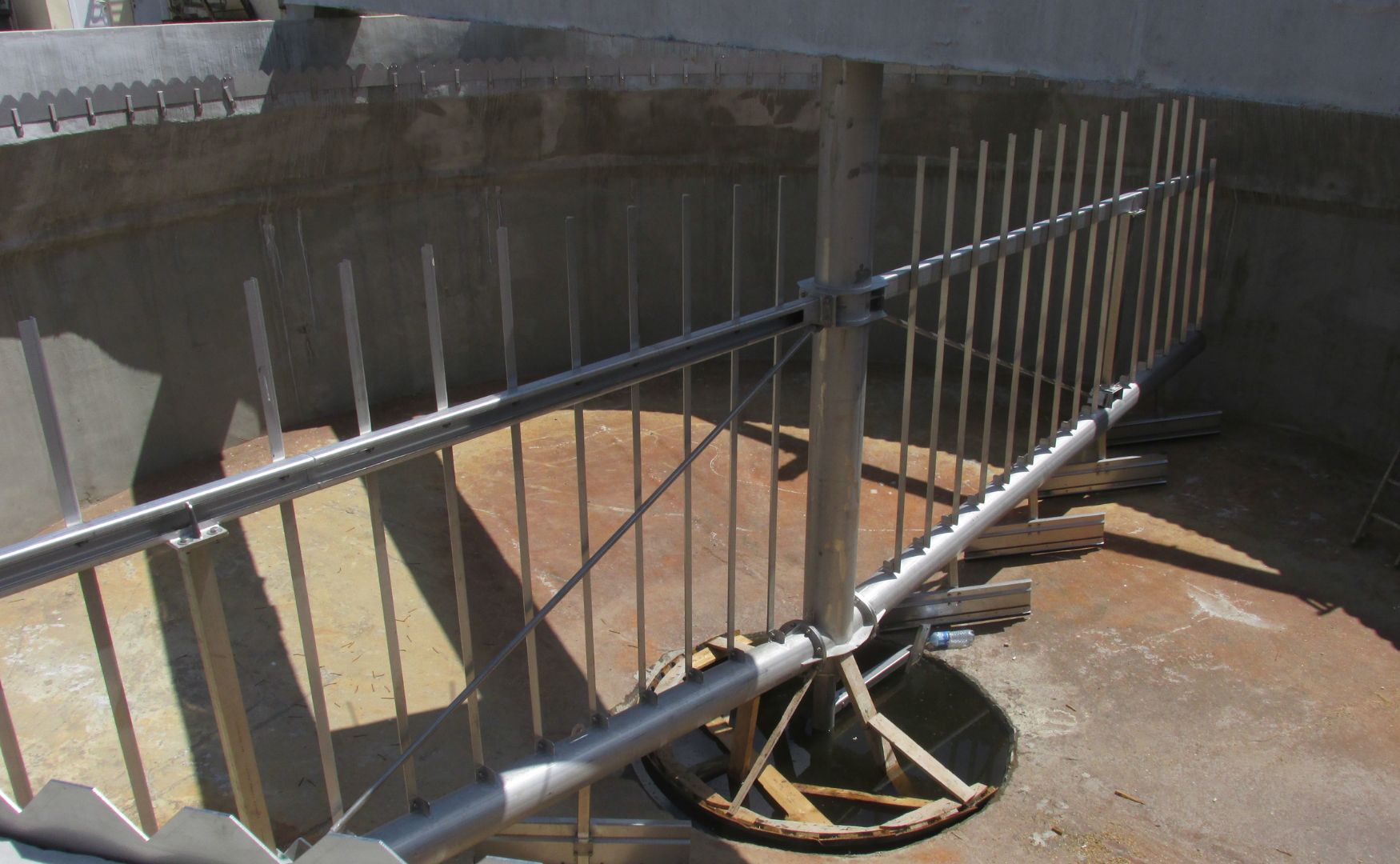
Photo: Sedimentation tank with scraper and sludge return (process: ALMA BHU BIO)
Application in practice
The aeration tank is the heart of wastewater treatment plants and plays a decisive role in the removal of organic compounds and nutrients from wastewater. Depending on the application and wastewater composition, the aeration process can be adapted:
Nitrification and denitrification: In many industrial applications, particularly in the chemical and food industries, nitrogen compounds such as ammonium (NH₄⁺) must be removed. In a two-stage process, microorganisms convert the ammonium into nitrate (NO₃-) (nitrification). In a further step, the nitrate is converted into nitrogen gas (N₂) and escapes into the atmosphere (denitrification).
Adaptation to wastewater with a high organic load: In industries such as the food and beverage industry or paper production, the wastewater often has a high organic load. The aeration tank can be adapted to these loads by increasing the aeration rate or optimizing the sludge content.
Combined processes: The aeration tank is often used in combination with upstream mechanical or chemical treatment processes (e.g. chemical precipitation or flotation) in order to reduce the load on the biological stage and achieve greater efficiency.
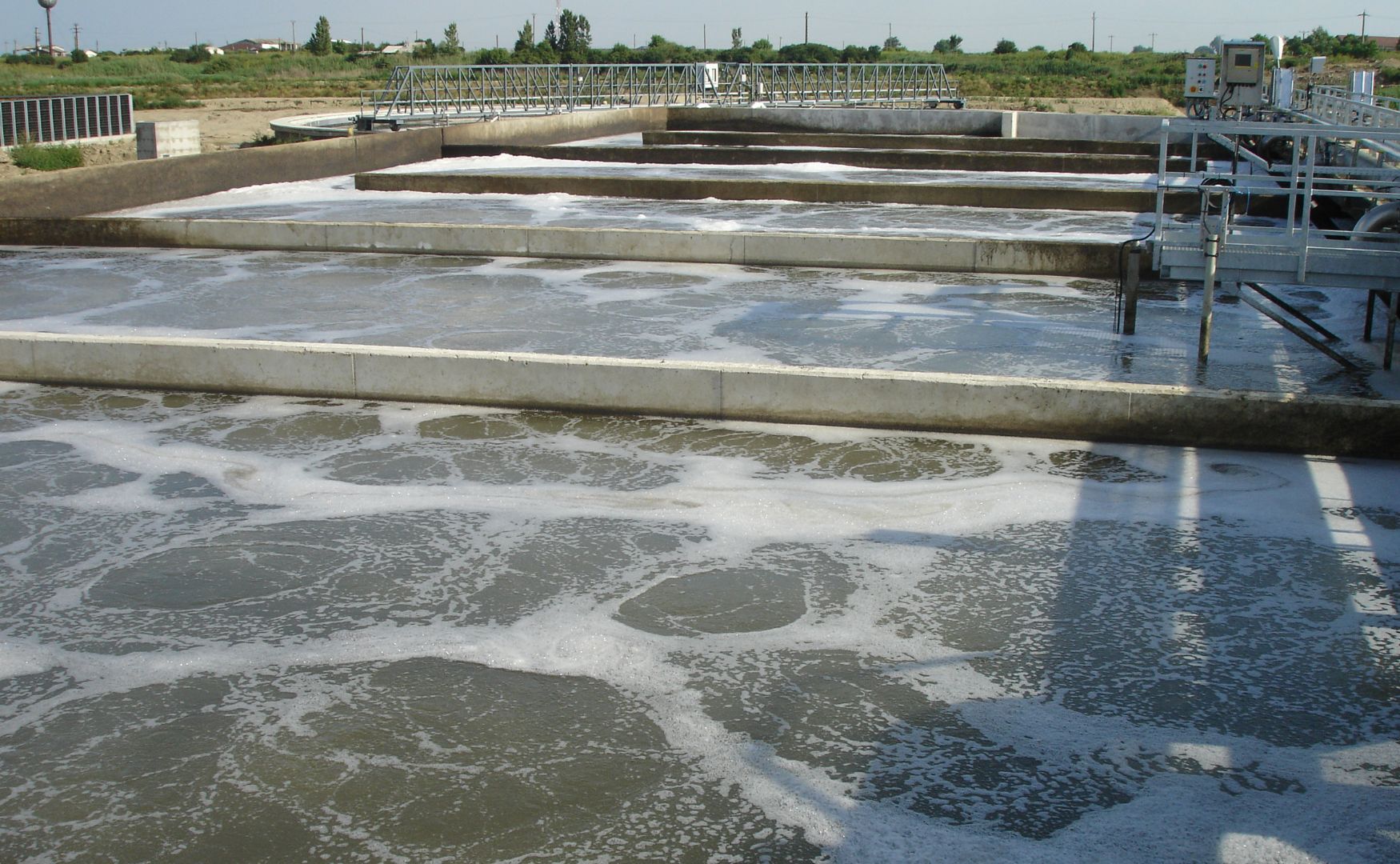
Photo: Classic aeration tank (process: ALMA BHU BIO)
Advantages of the aeration tank
Effective organic decomposition: The aeration tank is extremely efficient at reducing organic compounds in wastewater. The targeted supply of oxygen and the biological activity of the microorganisms can bring the wastewater to the required discharge values.
Flexibility and adaptability: Aeration tanks can be adapted to different wastewater volumes and compositions. This makes them versatile for both municipal wastewater treatment plants and industrial wastewater treatment plants.
High purification performance for nitrogen and phosphorus: The aeration tank can be operated in such a way that nutrients such as nitrogen and phosphorus are efficiently broken down in addition to the removal of organic substances.
Cost-efficient: Compared to other biological treatment methods, the activated sludge tank offers a good ratio of purification performance to operating costs, especially for large volumes of wastewater.
Challenges of the aeration tank
High energy requirement: The supply of oxygen via ventilation systems causes considerable energy consumption. It is therefore important to control ventilation efficiently in order to avoid unnecessary energy consumption.
Sensitivity to toxic influences: Certain chemicals and toxic compounds in wastewater can damage the microorganisms in the aeration tank and impair the purification process. It is therefore necessary to identify and treat potentially harmful substances at an early stage.
Sludge formation and disposal: Disposal of the excess sludge produced in the aeration tank requires suitable dewatering and disposal methods, which can result in additional operating costs.
Conclusion
The aeration tank is a central component of the biological wastewater treatment and offers an efficient solution for removing organic contaminants and eliminating nitrogen and phosphorus. Thanks to its flexibility and high purification performance, it is widely used in municipal wastewater treatment as well as in various industries. Despite some challenges, such as high energy requirements and the need for precise control of operating parameters, the aeration tank remains a key technology for sustainable and efficient wastewater treatment.





